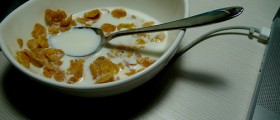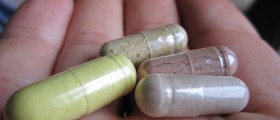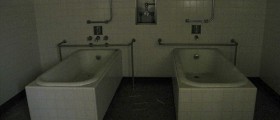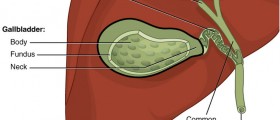
Large intestine is the part of the digestive system. Functions of the large intestine include absorption of water, nutrients and salts and storing of fecal material until it gets eliminated from the body. In this article we will discuss function and structure of the large intestine.What is Digestion?
The process in which the body gets energy and nutrients form the foods we eat is called digestion. Nutrients like proteins, fats and carbohydrates have to be broken down into smaller components so that they can be absorbed into the blood stream and then carried throughout the body. During the process of digestion proteins are broken down into amino acids, carbohydrates into polysaccharides and monosaccharides and fats into fatty acids and glycerol. Different organs are involved in digestion.
Structure of the Large Intestine
The large intestine, also known as large bowel, begins at the bottom end of the small intestine. It is located in the right side of the body, below the waist. The large intestine consists of the cecum and the colon. The cecum is the first segment of the large intestine that connects the colon to the last part of the small intestine. The colon includes four segments, the ascending colon that extends up from the cecum throughout the right side of abdomen, the transverse colon which runs horizontally through the abdominal cavity, the descending colon that passes down the left side of the abdominal cavity and ends in the rectum, and the sigmoid colon. Function of the Large Intestine
The large intestine has two major roles in the process of digestion. One of them is absorption of water and electrolytes from the content obtained from the small intestine. This helps to maintain the water balance of the body. Since breakdown of food is finished in the stomach and the small intestine, material that reaches the large intestine is fecal matter. Therefore, the large intestine absorbs water and salts from the waste material.
The second role the large intestine plays in digestion is absorption of vitamins like vitamin K. This vitamin is produced by beneficial bacteria that live in the colon. These bacteria also produce gases that help peristalsis or series of wave-like contractions of the muscles of the digestive tract. The amount of colonic bacteria depends on the type of food consumed. Frequent and prolonged use of antibiotics can lead to decrease in beneficial bacteria resulting in poor absorption of water from the stool.
Finally, the large intestine has a function to store the fecal matter until it gets excreted from the body.

















Your thoughts on this
Loading...